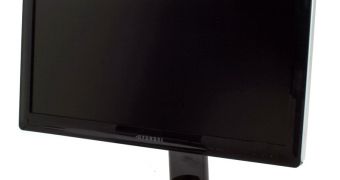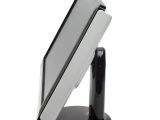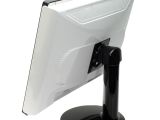When you are looking for 24" display quality, there is a short list that you have in mind. Thought expensive, the performance worths it all. And you definitely will add the W241D 24" widescreen monitor from Hyundai to your list when stepping out for a buy, mainly due to the fact that it comes much cheaper than the rest of the monitors hanging at its level. Saving around ?500 for yourself sounds like a business.
If W241D is cheaper, that does not mean it's poor in quality. The opposite, actually: it features the same quality standards as other prized 24-inch monitors from LG, Eizo, Dell or Samsung. Although its name doesn't sound as "heavy" as the others, on the market Hyundai W241D is the cheapest 24" monitor that comes with a full feature set. Most of all, the PVA LCD panel technology is to be taken into consideration, as it doesn't compare even by far with the cheap but even more reliable TN+Film LCD panels.
The Contrast Ratio of Hyundai W241D is 1000:1/3000:1(DCR), which is a pretty good one at this time, given the products on the market. Its native resolution is 1,920 x 1,200 and has a 6ms response time, as most of the 24" monitors do. The viewing angles rise up to 178/178 degrees H/V and the featured brightness goes to 500 cd/m?. Users can tilt, rotate, height and swivel the monitor chassis for better adjustment.
The supported inputs DVI (with HDCP), HDMI (with HDCP), VGA and Component allow any user to plug it to a Blu-ray/HD-DVD player or to use the monitor with a Xbox 360 both via HDMI or Component. While at non-native resolutions, the monitor still reports a 1:1 pixel mapping, but progressive scanning is to be used with the Xbox. There is also a combo that allows a simultaneous usage of a PC and a PS3 or Blu-ray player.
The integrated speakers are not too great, but there is the possibility of using a headphone jack, which comes handy. There is also a USB header provided and its two USB expansion ports are to be found on the left hand edge of the screen bezel. A little loss comes from the adjustment buttons, which are not very easy to be seen (they have the same color as the chassis) and very sensitive to touch.
When tested, W241D performs quite well. The contrast seems to be a little too strong when the colors are brighter, but there is a noticeable stability in the spectrum even at oblique angles. Mild color inversion in the vertical axis and some compression and loss of detail on very dark parts of a test image are also to be seen, but this is a small loss in comparison with the rest of the performance. The dark colors remain clear and deep and the bright ones crisp and even. Yet, there is a little inverse ghosting and some slightly over-saturated colors that keep the monitor away from perfection.
On the other hand, one has to agree that most of the competitors do share the same problems on the same technology. So, as I was saying in the beginning, if you're on for a buy and you can afford it, the W241D should be one of your first choices. It represents the quality in PVA 24" display and it will make an user happy with its performance levels.

 14 DAY TRIAL //
14 DAY TRIAL // 

